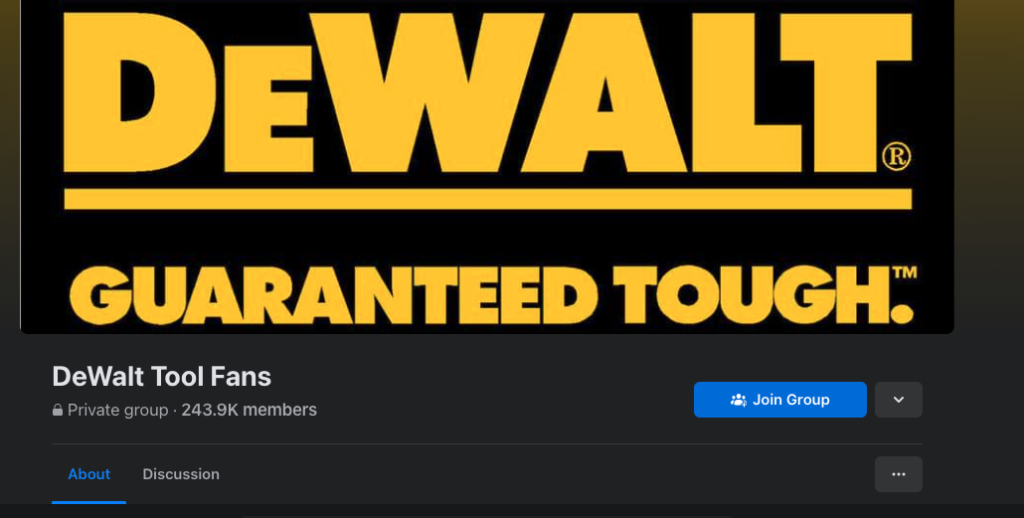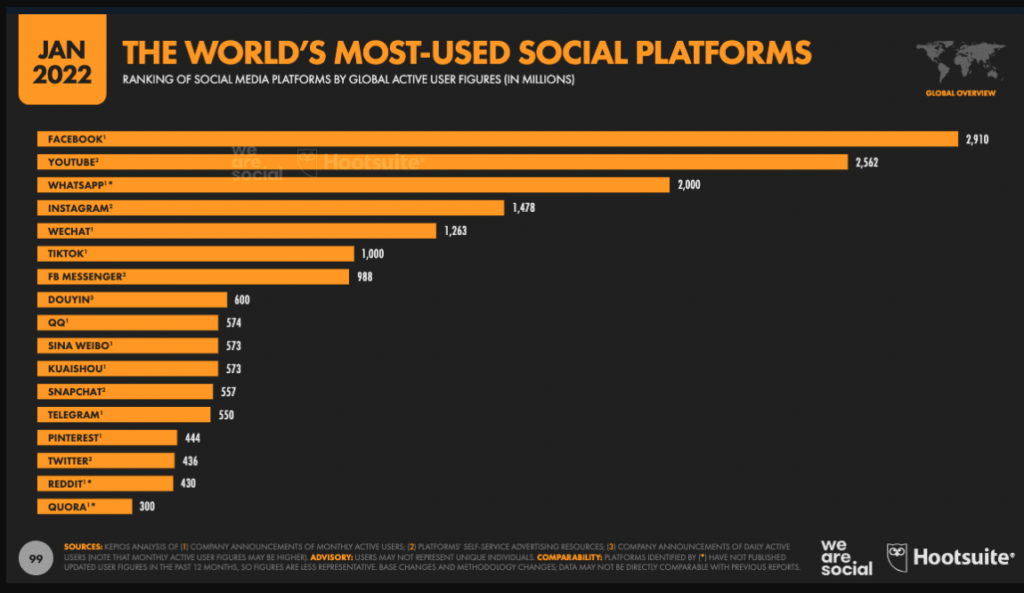What if you could achieve a return on investment (ROI) of 62% on your community and even have it pay for itself after a while if managed properly?
We all dream of this magical place where our products get recommendations daily, sales skyrocket, and ROI on social media platforms is through the roof. As someone who has been leading marketing and e-commerce companies, I'm here to tell you that this dream lives on, as well as answer some questions about this bold statement.
The ROI I mentioned above represents the average ROI generated by online communities on social networks or branded platforms which have been consistent and aligned with their branding. Brands are using communities to connect with targeted consumers, create trust in their products and services, and personalize their existing customer base.
It is possible to use these communities to develop innovative goods, cut support costs, and drive revenue by simply developing online forums for your customers. If you're under the impression that your company is not community-oriented, think again.
DEWALT, the power tool manufacturer, claims that they were able to save $6 million in research expenditures by creating a community. The DEWALT community was transformed into a free focus group that provided the power tool manufacturer with open feedback, resulting in significant product innovation and reduced support expenses.

A study conducted by the University of Michigan examined the relationship between online communities and sales and discovered that buyers spent 19 percent more after becoming members of a brand's online community.
Here's what I'll cover in this article:
- Getting Your Online Community Started
- 5 Steps For Building An Online Community
- Best Practices For A Thriving Community
Getting Your Online Community Started
One of the things that makes an online community is that people can talk to each other online. They can answer questions, ask for solutions, and develop relationships.
The size and kind of online community you end up creating for your user will depend on what your customer wants. For example, I wouldn’t want to share my personal taste in local books and authors with five thousand other people in a global Slack community. But I would love to share with a small group of good readers who know what they're talking about and have the same taste in books and authors.
Having this in mind, define your target audience and start thinking about the size of your community.
5 Steps For Building An Online Community
1. Establish A Goal, Purpose, And Audience
Establish a clear plan and purpose for your community. Ask yourself the following:
- Which people is it going to serve?
- What value is it going to provide?
- Who is your target audience?
Your community's most significant foundation is being precise and clear with your purposes and values.
Get into the nitty-gritty of specific target personas as well:
- Who is your ideal user?
- Where do they spend most of their presence online?
- Which type of content do they prefer to get information from?
You should be able to describe them perfectly. You should also be able to describe their online presence, whom they’re influenced by, and how they think and observe the world. The goal of populating your community is to attract the right people. To answer the question, "Who is this community for?"
Some examples:
- Is it a gathering spot for coffee aficionados to discuss the subtleties of their brew?
- Is it a healthy organic recipes group where moms discuss their well-kept secrets for the best healthy chocolate cake?
- Can it help ecommerce firm owners who want to sharpen their business skills?
When you've found the persona(s) you want in your community the next logical questions are:
- Will they have access to resources they didn't have before joining the community?
- How can you create a sense of familiarity to help users feel like established users that have been part of the community for some time?
- How do they feel now that they're part of your community?
It’s essential for these personas to be well developed and shared across your marketing team efforts and projects. You can develop your persona here for free.
Once you have the answers to these questions, like your company has a business owner, managers, and employees, your community needs team members dedicated to specific jobs.
Community management is crucial to community success. Your community manager acts like the mayor of a city and is the backbone of how your community works. They are the community's chief operating officer. Because they work so closely with your community, they'll be able to discover improvements to your product, community, and branding that need to be implemented.
Other team members can help your community. For example, your marketing manager might plan your community's content, potentially with the goal of encouraging community members to share common interests, provide feedback or reach out to customer support. They can also create content and initiatives with the goal of incentivizing referrals for new members.
2. Select A Community Platform
Now that you have a community goal and member personas, it’s time to start building this community on the platform of your choice.
One major consideration in this step is how many people your community currently has or will grow into. Set up a WhatsApp group chat, Telegram channel, or Instagram direct message for a community of ten people. Consider starting a Reddit or Facebook group if you want to reach a large audience. Nobody wants a group chat with 100,000 people.
You have two main options when selecting a platform:
- Use social media as a free community development platform
- Use online community software that are designed specifically for community building, some of which are paid
Free community development platforms include social media sites such as Instagram, Facebook, and Reddit. Your community can be hosted within a more prominent platform's micro-community if you (and your community members) sign up for a free account.

Now, we all love some fantastic software for creating an online community, right? Here you can find ten online community platforms and their perks, as well as information on specific features, pricing, and screenshots.
A community software vendor actively solicits user feedback and continually improves its product. Your vendor must constantly be innovating with their platform in order for your community to keep up with the latest trends and the needs of your members.
First step: You can go through the list of software in the above article on your own time and rank each by your own criteria, budget, and needs. Don’t try to find a quick fix; really dig into the details and see the comparison through your lens of needs and wants. I highly suggest that you consult with your community manager to get a list of requirements once you have defined your goal, purpose, and audience before starting to look at communities.
Second step: Contact two (or more) of these platforms and ask for a tailored demo and/or offer and see if they can meet your needs or not.
3. Create Your Playground And Make The Rules
Set Up Processes, Guidelines, And Activities
Your community may consist of a single large forum or be divided into smaller subgroups or themes. For example, you might start a book club and divide it by genres. You might start a travel forum and organize topics by location. A marketing community may divide topics into categories such as social media marketing, SEO, paid advertising, and more.
This can also help you determine which community members interact the most with specific categories and which items they prefer.
It’s also important to set up processes for onboarding, retention, customer support, and more. Make sure to involve other relevant departments in these discussions, such as marketing, customer service, and others.
You also need to think about and decide what language is spoken, what the rules and regulations are, and what is allowed and what is not.
Examine The Member Sign-Up Procedure
Your sign-up experience, like your transaction procedure, should be easy and convenient. Before launching your group, go over the process again and sign yourself up to test the flow. Experience the steps needed to join and have a real feel of the signup procedure.
Once you have implemented this, ask yourself the following questions:
- Do you need to ask any further questions to ensure that the members are qualified?
- Is it necessary to ask fewer questions to attract members to apply? Are some of the questions redundant?
- Are the community benefits and expectations clearly stated?
Define The Duties Of Your Team
You want your community to function as a seamless brand extension. Knowing who handles specific situations from the beginning will save you lots of headache. Each team member involved in the community should understand their role and how it fits into the larger picture.
Below are some questions to check if you have correctly set up your team functions and communication.
- When a member of the community complains, who responds?
- Who decides if a member violates the rules?
- Who removes posts?
- Who starts conversations inside the community?
- Who engages in the comment sections and continues the conversation?
- Who helps celebrate members of the community?
- Who approves members?
Whether you intend to govern your community directly or allow members to moderate themselves, you must determine what you require from them to succeed.
Configure Spam Filters
Spam accounts will find your community, infiltrate it, and cause havoc. Configure spam filters for member sign-up. To prevent spammers from creating profiles, you can use reCAPTCHA or a similar tool.
4. Community And Brand Alignment
It's time to give your community a personality. You can think of this the way you might think o9f cities:
- When you think of LA, you might think of influencers, matcha, and the boom of the healthy food industry
- Think of Colorado and you think of secluded views of amazing mountains.
You need to ensure that your digital community (or “online city”) has a personality for which it’s well-known and loved. This is what sets you apart from the crowd, and which will eventually bring you your first 100 die-hard fans, and they will bring 1000 people more if you keep your word and brand on point.
Your community should feel like an extension of your brand to the members. Your community can be branded with your logo and company colors and should follow all of your branding rules from A to Z. In addition to visual branding, you should adhere to brand language and tone guidelines in community posts, comments, and videos.
A brand targeting Gen Z, for example, would not have a business-focused landing page and a fun and edgy community post. You should align your communication across all social platforms, websites, social media, and email. You can differentiate not to bore your customers, but you should have the same style.
Expert Tip: Always perform a test when it comes to trying out new copy, new headlines, new images, and more. Regardless of size, industry, or earnings, every company must test.
You’ll also want to select success metrics for the content you publish in your community. Metrics can include rates of engagement, click-through, conversion, visits, sign-ups to gated content, and also interactions with the content over a longer period of time.
This will allow you to focus on questions such as the following:
- You may be focusing on signups as a new online community. How many people joined out of every 100 visitors to the community's login/application page?
- How many members clicked through to the blog post we discussed today?
This is going to be a forever process in work, so make sure you stay curious and keep asking the important questions in each stage of your community journey.
5. Promote Your Community
Promoting your community can be likened to marketing of a product. By focusing on the problem that the community addresses, you'll be able to persuade others as to why they should join.
Here are 3 useful methods for promoting your community (there’s many more out there):
Engage Key Opinion Leaders
Promote your community by collaborating with influencers, content creators, and people with influence in your niche. The influencer should already have a following of similar people to your potential customer. With this strategy, you can divide your efforts into organic and paid and save some investments for other tactics like traffic campaigns and retargeting. A key success metric here is whether you achieve enough conversions to pay for your acquisition costs.
Referral Programs
Referral programs involve rewarding members for referring newcomers to your community. Reward options include freebies, discounts, and more. If your current members know other people who would be interested in joining the community, you can use that information to find new members.
Social Media Advertising
Today's advanced social media advertising software makes it easy to generate, disseminate, test, and analyze targeted social media outreach. You can pay to promote your community online by targeting specific communities, demographics, or hashtags. The more specific you get, the better chance you have of converting a view into a community sign-up.
Best Practices For A Thriving Community
1. Celebrate The Right People
Honor the contributions of the people in your community. Make sure to recognize your members publicly. Some good candidates are users who have been most successful in using the product, users who have participated in challenges the most, or users who have generated the most referrals.
Community members will determine how you commemorate them—make sure to ask what makes them feel unique and loved. For example, you might write an article about how grateful you are to have them as a community member, give them free products for a whole month, celebrate birthdays in a specific manner, or even organize IRL meetups and surprise them.
An example for a book club: organizing a reading and giving out a book that was talked about as a gift to everyone present.
2. Make Sure You Hire The Right Community Manager
Think of your community manager as your community's Chief Operating Officer (COO). For the operations behind the scenes to appear seamless to the members, it is their responsibility to ensure that everything is working as smoothly as possible.
This includes, but is not limited to, these red flags you should be wary of:
- Managing members who are outraged by the behavior of their fellow group members may decide to leave the group, which will leave them with a negative impression of your company's brand.
- Ensuring members obtain the value they were promised upon applying. Otherwise, your community may lose members.
- Preventing notification overload, which can drive people away from your community and make it hard for them to remember it.
You should hire your Community Manager based on their success metrics (such as signups, click-throughs, and conversions) and their enthusiasm for seeing your community grow.
3. Tracking Is The Pillar Of Growth
Everything should be recorded and analyzed to the fullest extent possible.
Looking at the figures is the only way to find out if something is functioning or not. Even if your community has a very high level of involvement, what good is it if your conversion rate is 0%?
In this case, you're paying a community manager to administer an ineffective community, depriving your team of valuable time and resources, and wasting money.
Your community's growth and performance versus your initial aims can only be evaluated by tracking metrics such as signup, engagement, user-generated content, click-throughs and conversions, and the like. Your community is a great place to experiment with new ideas if your conversion rate is low.
4. Join Other Communities And Share Your Knowledge With Them
Make use of what's already out there rather than reinventing the wheel. It is possible to find a recipe for success in an online community, especially by interacting and sharing with like-minded communities.
Two minds think better than one. From podcasts to books, we know that sharing knowledge is a new way forward, so your content and case studies should be shared with similar online communities. Organizing events and talks, and showing up where it matters most for your brand should also be something that’s on your to-do’s for your online community.
Take inspiration from other thriving communities, put it to the test with your audience, and make adjustments as necessary. You can learn a lot about growing your community, increasing participation, directing traffic to your website, and scaling your business by observing how other communities operate.
Get Started Building Your Own Community
Online communities can become one of your most effective marketing channels if they are given a clear purpose and are adequately moderated.
They can be your bubble on the internet, filled with fans who speak about you with joy and appreciation. The ability of communities to build relationships between companies and customers is a proven marketing approach that organizations in practically any industry can implement if they choose to put in the work and show they care.
Subscribe to the Indie Media Club newsletter for more on building and maintaining communities.
Want to keep learning? Check this podcast out: How To Build The World’s Largest Theme Park Fan Site
Related Read:
Related List of Tools: Online Publishing Platforms For Digital Publishers
Also Worth Checking Out: Content Distribution Software To Reach Your Target Audience


